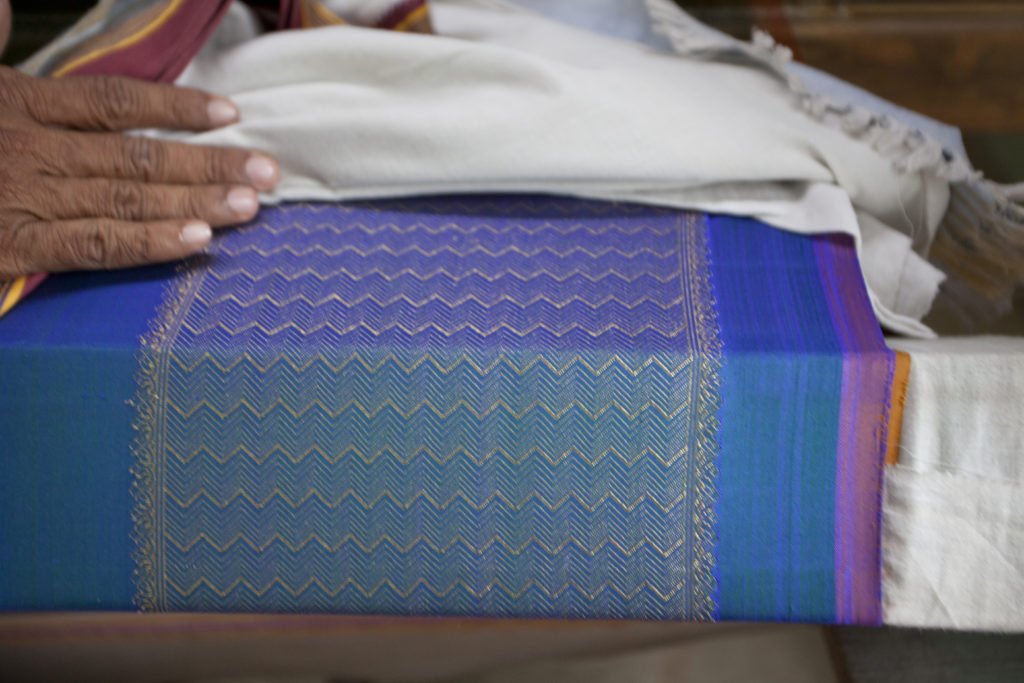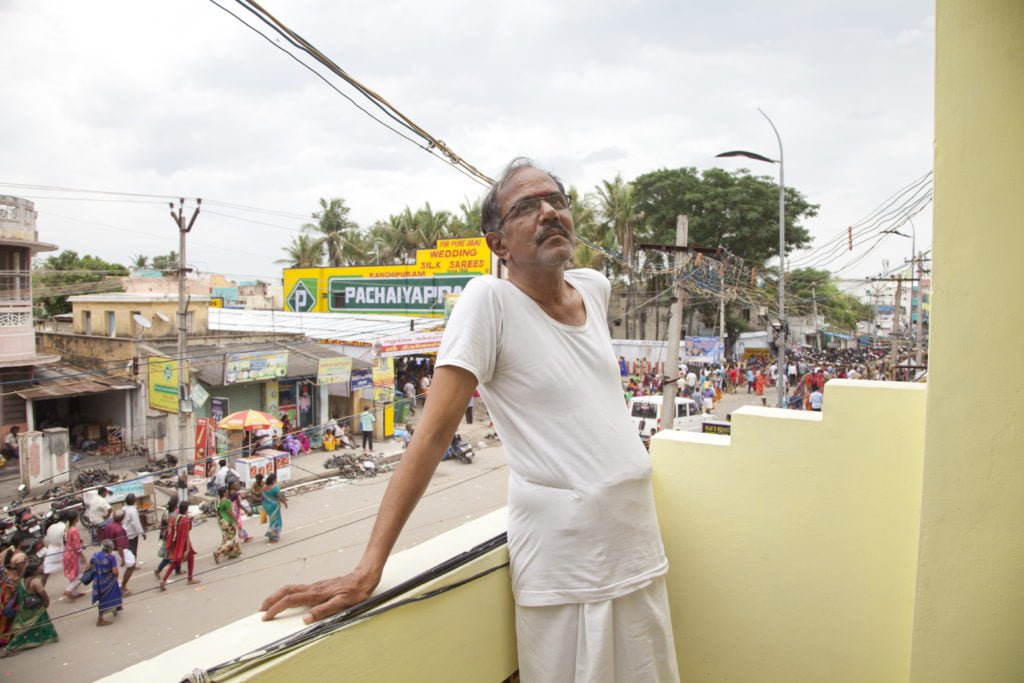If you think of khadi silk sarees, particularly those woven in Kanchipuram as these ones have, you cannot escape the Kalakshetra connection.
Rukmani Devi Arundale and the designs she created and wove in Kalakshetra have provided design inspiration for scores of weavers in South India. This continues to this day.

Here is the thing though. People in Kanchipuram take handwoven sarees for granted. Khadi is a new visitor but Kanchi cotton was what they used to do in this town. Silk brought in more income so they imported it from Bangalore with the zari coming from Surat. Khadi though was tough to weave. A challenge.

Kanchipuram
Master weavers in Kanchipuram came from Saurashtra. They still speak their native Gujarati tongue at home.
Says Paresh Patel, whose unit weaves Ashavali sarees in Ridrol (near Ahmedabad), Gujarat. “Kanchipuram is where our Gujarati weavers ended up. Therefore it is the most advanced, refined weave with three-ply silk.”

Kanchi Khadi is made of murukku pattu or twisted yarn.
The border is two-ply. As is the body. The pallu is of three ply silk.
Common motifs are the hamsa or swan-peacock, yazhi or sphinx, and kalai-arasi or dancing girl.
Often the border and the body are connected by a korvai pattern
From the salt pans of Kutch to the stifling heat of Kanchipuram, these Saurashtra weavers brought their tools and techniques and used these treasures to refine the traditional art form that they were born to do.
Weavers of the lotus thread, they call themselves. But that is another story.





